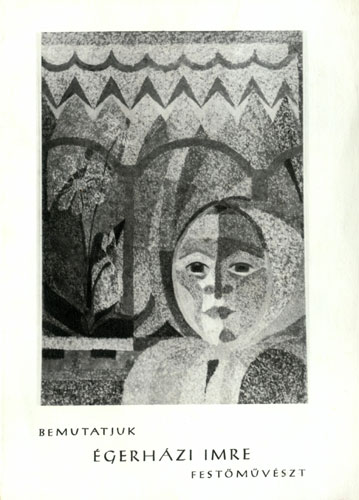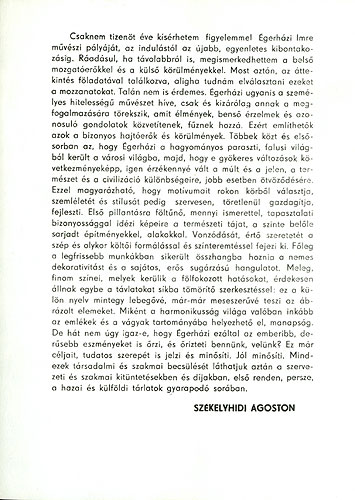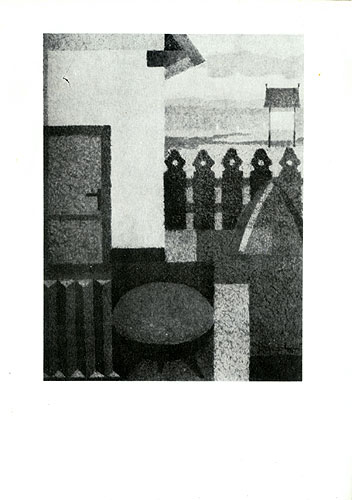I have been able to observe the artistic career of Imre Égerházi for almost fifteen years, from the beginning to another, more even state. In addition, if from a distance, I was able to learn about the internal driving forces and external conditions. Now, when faced with the task of review, I could hardly separate these moments. Not that it would be beneficial. Égerházi is a believer in art with personal authenticity, he only and exclusively strives to formulate what is conveyed and attached by experiences, inner emotions and identifying thoughts. Therefore, those specific driving forces and conditions can be mentioned. Among other things, the fact that Égerházi changed the traditional peasant world of a village for an urban one, and then, as a result of this radical change, became very sensitive to the differences, and in the best cases, synergy, of past and present, nature and civilization.
This explains the fact that he chooses his motives from themes related, and enriches and develops his approach and style organically and unbroken. At first glance, it is striking how much knowledge and empirical certainty he evokes the natural landscape into his paintings, with structures and figures that sprouted almost from it. He expresses his attraction and loving understanding with beautiful and sometimes poetic shaping and color creation. Especially in his most recent works, he has managed to reconcile noble decorativeness with a distinctive, radiant atmosphere. His warm, subtle colors, which avoid heightened effects, coincide interestingly with the editing that compresses the exhibits in a plane: this special language makes the depicted elements almost floating, almost fabulous. Just as the world of harmony can really be placed more in the realm of memories and desires today.
But isn’t it true that Égerházi thus preserves and makes us preserve the more human, serene ideals in us, with us? It already indicates and qualifies his goals and chosen role, and does so extremely well. We can then see the social and professional appreciation of all this in the organizational and professional awards and prizes, first of all, of course, in the growing line of domestic and foreign exhibitions.
Ágoston Székelyhidi
1978





